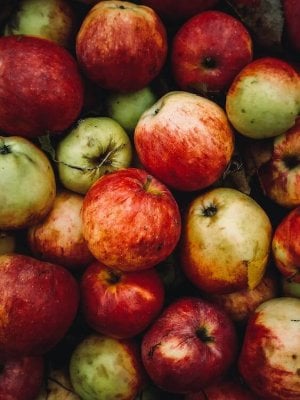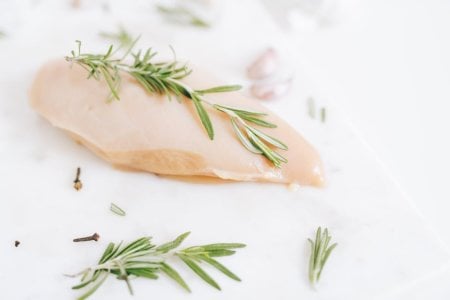Tired of sky-high grocery bills? CHOICE shares tips for shopping smarter
- Replies 4
As the cost of living continues to rise, it's more important than ever to think outside the box and find new ways to save money.
It was reported that in 2022, ordinary Aussie household expenditure increased by 11.4 per cent in total and 6.2 per cent specifically on food.
We all need to find ways to stretch our money a little further, and sometimes, that means cutting back on spending when necessary.
Luckily for us, a consumer advocacy organisation called CHOICE has released suggestions on how to reduce the cost of food in our trolleys, as living expenses continue to go up!
From choosing cheaper produce and taking a closer look at the price per unit, CHOICE suggests that 'a few simple swaps to your regular routine could save you hundreds or even thousands of dollars on your grocery bills'.
So, let’s get to it!
Favour pre-packed produce? It might be time to rethink
These days, convenience is the name of the game, and in the context of retail grocery shopping, there are few things as convenient as pre-packed produce.
Who wouldn’t appreciate your fruit and veg already washed, chopped, and packed, right?
‘But you almost always pay a premium for these convenience products, including things such as packaged cheese slices and ham as opposed to buying loose from the deli, not to mention the extra plastic packaging you'll need to dispose of,’ CHOICE said.
In their 2022 analysis, CHOICE found that loose produce is generally cheaper than its packaged counterparts, and in terms of unit prices, choosing the cheapest options can save Aussies up to $1900 a year!
They also added that pre-cut food has a tendency to go off faster, which increases the likelihood of it going straight to the bin (and your wallet shedding a tear).
'Ugly' produce is fine

Major supermarkets now sell imperfect fruit and vegetables at discounted prices because of how they look. (Oddly saddening, when you pause and think about it… But good for our wallets!)
You may be familiar with these since Woolworths markets them as 'The Odd Bunch', while Coles refers to them as 'I'm Perfect' products.
In selling these at lower prices, both supermarkets have highlighted that these slightly different types of produce are different only in shape and size.
They’re a good way to prevent food waste, save money on your grocery bill, and assist a farmer who had trouble selling their produce.
As CHOICE put it: ‘If you look past a few little bumps or knobbly bits, you can make significant savings, and what does it matter what your potatoes look like if you're going to mash them up?’
Keep an eye out for in-season fruit and vegetables
The last couple of months have been wild for the Australian consumer, with produce such as lettuce and potatoes becoming expensive and rare due to factors such as poor weather.
‘If you keep on top of what's not only in-season but what is plentiful and available, you can stock up on the best-value produce while it's at a low price,’ CHOICE said.
The consumer group also added it would be wise for shoppers to take advantage of their connections with local grocers or take time to scan the websites of supermarkets to get a feel of what fruits and vegetables are good value, especially considering how out-of-season produce surges in price.
‘Remember that frozen or tinned versions (where applicable) of your favourite produce are great-value alternatives to fresh produce and are just as nutritionally beneficial,’ CHOICE added.
Check unit prices, and go for bulk!

CHOICE stressed that taking a closer look at the unit prices of the products we often buy can lead to savings of up to a thousand dollars yearly.
‘For example, consider a 2kg packet of rice for $4.80, and a 1kg packet for $3. The first packet has a unit price of 24c per 100g, the second is 30c per 100g — so the product with the higher packet price is the better deal,’ they explained.
CHOICE also added that with chicken, going for whole or drumsticks instead of the breast actually leads to savings since per kilogram, a whole chicken is cheaper by half and drumsticks are cheaper by around three times.
In addition to consumers finding out which items give them their money’s worth, Consumers International, a group of consumer organisations, also says that checking unit prices keeps shoppers informed when producers sneakily change item sizes without any announcement.
‘When buying food and groceries, consumers could generally achieve very significant savings by taking account of unit prices rather than relying on less accurate and reliable practices or assumptions about value,’ the group said.
Switch supermarkets!
Going to a supermarket that offers relatively cheaper prices might seem like a no-brainer, but things like rewards programs or other schemes sometimes make it hard to make the switch.
That said, in 2021, CHOICE found that ALDI was the most affordable Aussie supermarket chain after comparing the prices of 29 regular household items across retail giants like Woolies, Coles, and IGA.
When opting for the budget items in ALDI’s stock, CHOICE said Aussies could save up to 54 per cent compared to shopping at rival stores.
However, CHOICE stresses: ‘That's not to say you can't switch your shop between different supermarkets or shop at multiple supermarkets at once to take advantage of specials on the products you regularly buy.’
‘To keep track of regular specials, download the supermarket shopping apps on your phone and have a browse before you decide where to shop that week.
‘You can also browse weekly catalogues and sign up to emails to be notified of specials on your favourite products.'
Other tips from CHOICE include going for homemade salad dressings instead of store-bought ones, opting for cheaper alternatives to big brand names, and growing herbs at home.
Now speaking of ways to save money, here are some articles you also might want to read:
Tell us in the comments section below!
It was reported that in 2022, ordinary Aussie household expenditure increased by 11.4 per cent in total and 6.2 per cent specifically on food.
We all need to find ways to stretch our money a little further, and sometimes, that means cutting back on spending when necessary.
Luckily for us, a consumer advocacy organisation called CHOICE has released suggestions on how to reduce the cost of food in our trolleys, as living expenses continue to go up!
From choosing cheaper produce and taking a closer look at the price per unit, CHOICE suggests that 'a few simple swaps to your regular routine could save you hundreds or even thousands of dollars on your grocery bills'.
So, let’s get to it!
Favour pre-packed produce? It might be time to rethink
These days, convenience is the name of the game, and in the context of retail grocery shopping, there are few things as convenient as pre-packed produce.
Who wouldn’t appreciate your fruit and veg already washed, chopped, and packed, right?
‘But you almost always pay a premium for these convenience products, including things such as packaged cheese slices and ham as opposed to buying loose from the deli, not to mention the extra plastic packaging you'll need to dispose of,’ CHOICE said.
In their 2022 analysis, CHOICE found that loose produce is generally cheaper than its packaged counterparts, and in terms of unit prices, choosing the cheapest options can save Aussies up to $1900 a year!
They also added that pre-cut food has a tendency to go off faster, which increases the likelihood of it going straight to the bin (and your wallet shedding a tear).
'Ugly' produce is fine

Major retailers are known to sell produce with slight imperfections at lower prices. CHOICE says choosing these can lead to savings. Image Credit: Pexels/Eugene Golovesov
Major supermarkets now sell imperfect fruit and vegetables at discounted prices because of how they look. (Oddly saddening, when you pause and think about it… But good for our wallets!)
You may be familiar with these since Woolworths markets them as 'The Odd Bunch', while Coles refers to them as 'I'm Perfect' products.
In selling these at lower prices, both supermarkets have highlighted that these slightly different types of produce are different only in shape and size.
They’re a good way to prevent food waste, save money on your grocery bill, and assist a farmer who had trouble selling their produce.
As CHOICE put it: ‘If you look past a few little bumps or knobbly bits, you can make significant savings, and what does it matter what your potatoes look like if you're going to mash them up?’
Keep an eye out for in-season fruit and vegetables
The last couple of months have been wild for the Australian consumer, with produce such as lettuce and potatoes becoming expensive and rare due to factors such as poor weather.
‘If you keep on top of what's not only in-season but what is plentiful and available, you can stock up on the best-value produce while it's at a low price,’ CHOICE said.
The consumer group also added it would be wise for shoppers to take advantage of their connections with local grocers or take time to scan the websites of supermarkets to get a feel of what fruits and vegetables are good value, especially considering how out-of-season produce surges in price.
‘Remember that frozen or tinned versions (where applicable) of your favourite produce are great-value alternatives to fresh produce and are just as nutritionally beneficial,’ CHOICE added.
Check unit prices, and go for bulk!

CHOICE found that chicken breasts are more expensive per kilo compared to a whole chicken. Image Credit: Pexels/Leeloo Thefirst
CHOICE stressed that taking a closer look at the unit prices of the products we often buy can lead to savings of up to a thousand dollars yearly.
‘For example, consider a 2kg packet of rice for $4.80, and a 1kg packet for $3. The first packet has a unit price of 24c per 100g, the second is 30c per 100g — so the product with the higher packet price is the better deal,’ they explained.
CHOICE also added that with chicken, going for whole or drumsticks instead of the breast actually leads to savings since per kilogram, a whole chicken is cheaper by half and drumsticks are cheaper by around three times.
In addition to consumers finding out which items give them their money’s worth, Consumers International, a group of consumer organisations, also says that checking unit prices keeps shoppers informed when producers sneakily change item sizes without any announcement.
‘When buying food and groceries, consumers could generally achieve very significant savings by taking account of unit prices rather than relying on less accurate and reliable practices or assumptions about value,’ the group said.
Switch supermarkets!
Going to a supermarket that offers relatively cheaper prices might seem like a no-brainer, but things like rewards programs or other schemes sometimes make it hard to make the switch.
That said, in 2021, CHOICE found that ALDI was the most affordable Aussie supermarket chain after comparing the prices of 29 regular household items across retail giants like Woolies, Coles, and IGA.
When opting for the budget items in ALDI’s stock, CHOICE said Aussies could save up to 54 per cent compared to shopping at rival stores.
However, CHOICE stresses: ‘That's not to say you can't switch your shop between different supermarkets or shop at multiple supermarkets at once to take advantage of specials on the products you regularly buy.’
‘To keep track of regular specials, download the supermarket shopping apps on your phone and have a browse before you decide where to shop that week.
‘You can also browse weekly catalogues and sign up to emails to be notified of specials on your favourite products.'
Other tips from CHOICE include going for homemade salad dressings instead of store-bought ones, opting for cheaper alternatives to big brand names, and growing herbs at home.
Now speaking of ways to save money, here are some articles you also might want to read:
- These Grocery Store Tricks are Making You Spend More - Find Out How to Fight Back
- 'Unsupermarketing': The growing trend that could help you save hundreds on your grocery bills!
- Shopping on a tight budget? Here's a budget grocery list to keep you healthy under $70
Tell us in the comments section below!








